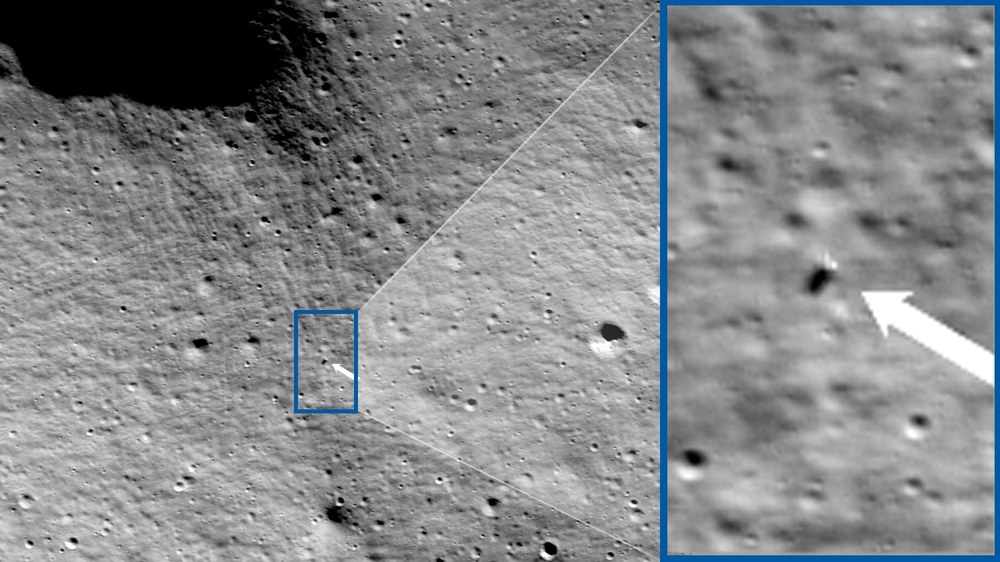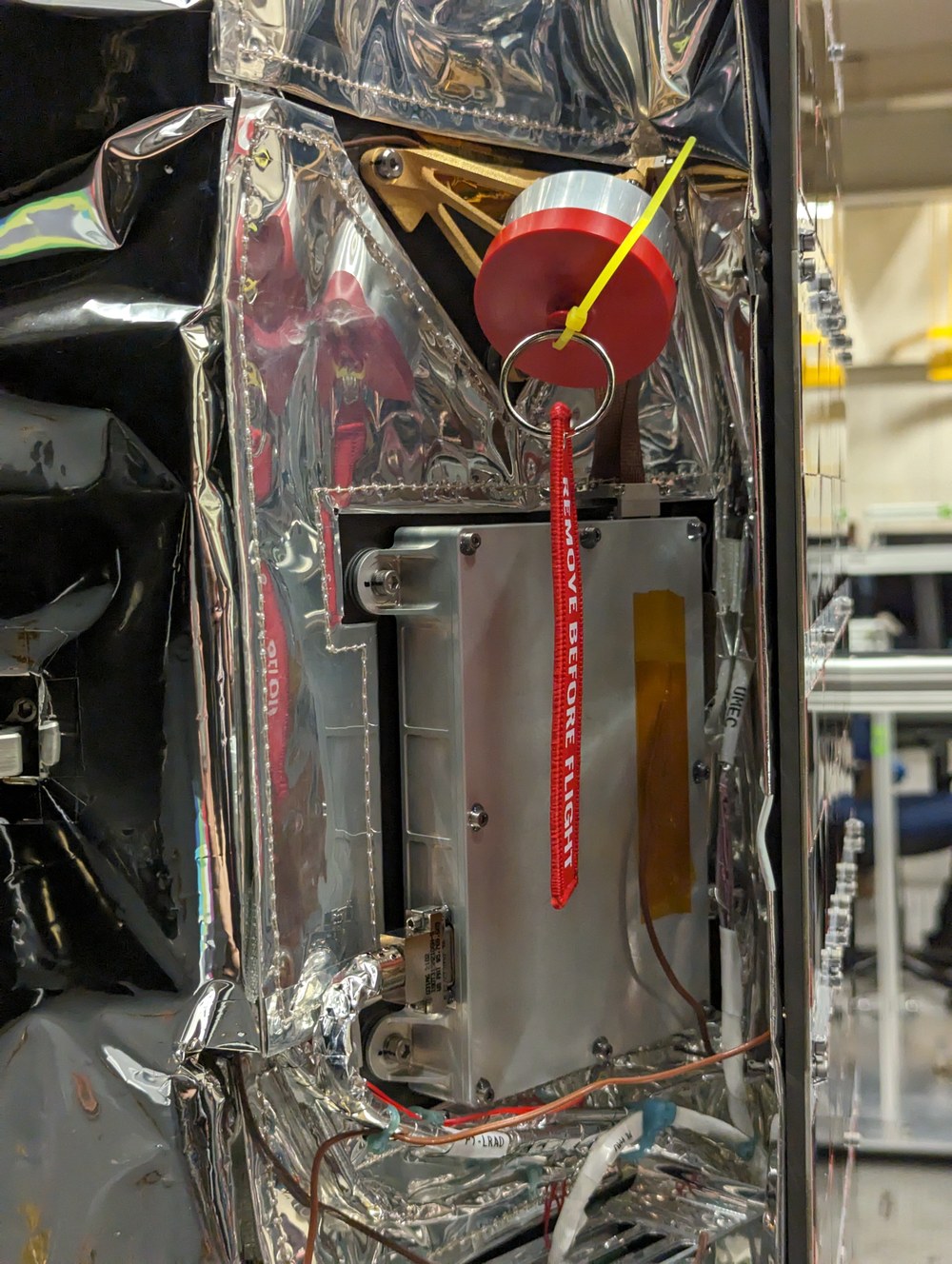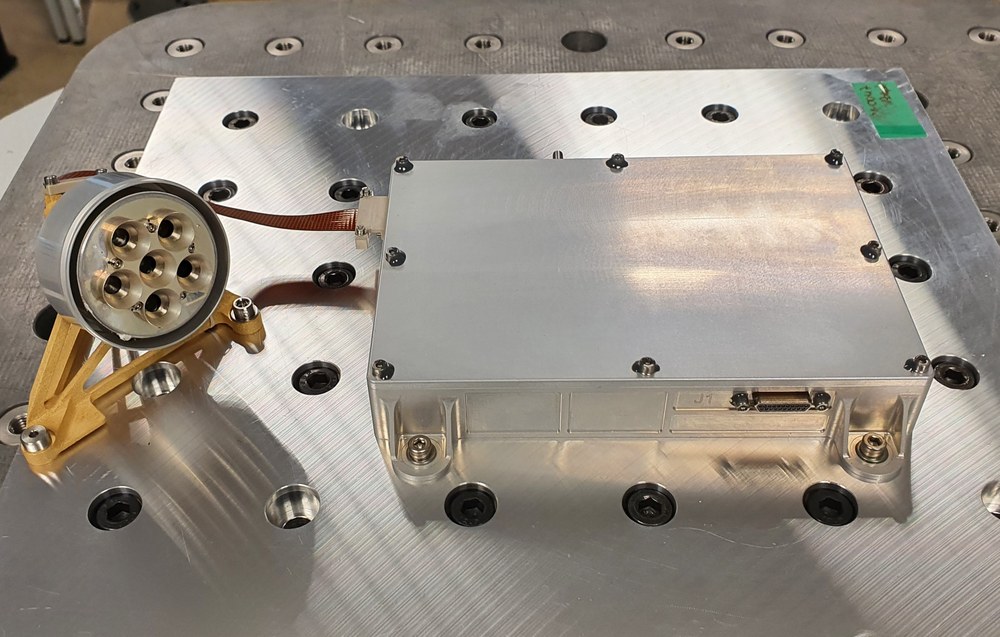German instrument to study Moon's eternal shadows with private mission

NASA/Goddard/Arizona State University
On 22 February 2024, the US 'New Space' company Intuitive Machines became the first private company to land on the Moon with its IM-1 Odysseus mission. The landing site is located around 800 kilometres north of the lunar South Pole, east of the Malapert A crater. According to Intuitive Machines, the landing took place just 1500 metres from the intended landing site, meaning that Odysseus is located in the south of the South Pole-Aitken impact basin which measures over 2000 kilometres in diameter. The exact landing coordinates are 80.13 degrees South and 1.44 degrees East. The lander is on a surface at an incline of 12 degrees and topographical height of 2579 metres above the reference 'selenoid' – a modelled 'lunar surface' with identical gravitational pull.
Since the landing, the lander has sent its first images to Earth and, for the most part, the scientific instruments on board the Nova-C lunar module have been working nominally, despite the unfavourable orientation of the lander. This marks an important milestone in the history, and future, of lunar exploration. The success of NASA's CLPS (Commercial Lunar Payload Services) programme will make access to and exploration of Earth's natural satellite much easier.
DLR's Institute of Planetary Research is involved in the follow-up mission, IM-2, which is scheduled for launch at the end of 2024, together with the Freie Universität Berlin. Together, the two institutes are providing the measuring instrument LRAD (Lunar Radiometer). LRAD was integrated into the µNova (Micro-Nova) lunar hopper at the beginning of the year and successfully tested, thus clearing a first important hurdle on the way to the Moon.

Intuitive Machines
The search for ice as a resource for future missions
As part of the NASA CLPS programme, Intuitive Machines will send the µNova lunar hopper and a rover to the South Pole of the Moon in another Nova-C lunar module – the IM-2 mission. IM-2 will land even closer to the South Pole than IM-1, at 89 degrees South latitude. There, the mission will search for water ice, which is an important resource for future astronauts in the Artemis programme. The µNova lunar hopper will separate from the Nova-C landing unit and autonomously complete a series of short jumps over the lunar surface. The µNova hopper can travel up to 25 kilometres away from the original landing site and still transmit its navigation and measurement data. DLR's onboard LRAD instrument will join the hopper and measure lunar surface temperatures while searching for places that are cold enough for stable water ice deposits.
At the Moon's South Pole, the Sun is so low above the horizon that it casts shadows in many craters all year round. A hypothetical astronaut – or instrument – at the bottom of such a crater would therefore always be in the dark, as the Sun never shows itself above the crater rim. In these permanently shadowed regions, the temperatures are so low that water ice can stably exist, even in a vacuum over long geological periods. It is precisely these deposits that will be explored when µNova not only looks into the eternal darkness of the Moon's craters, but also makes short excursions into and out of these 'shadow realms'.

Tags:
